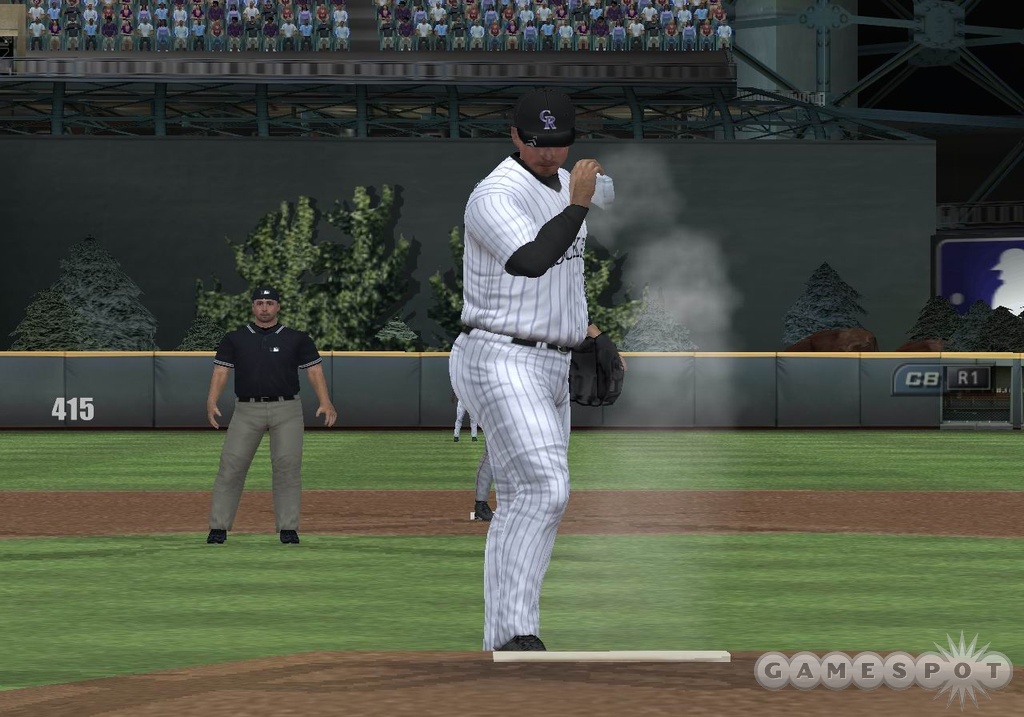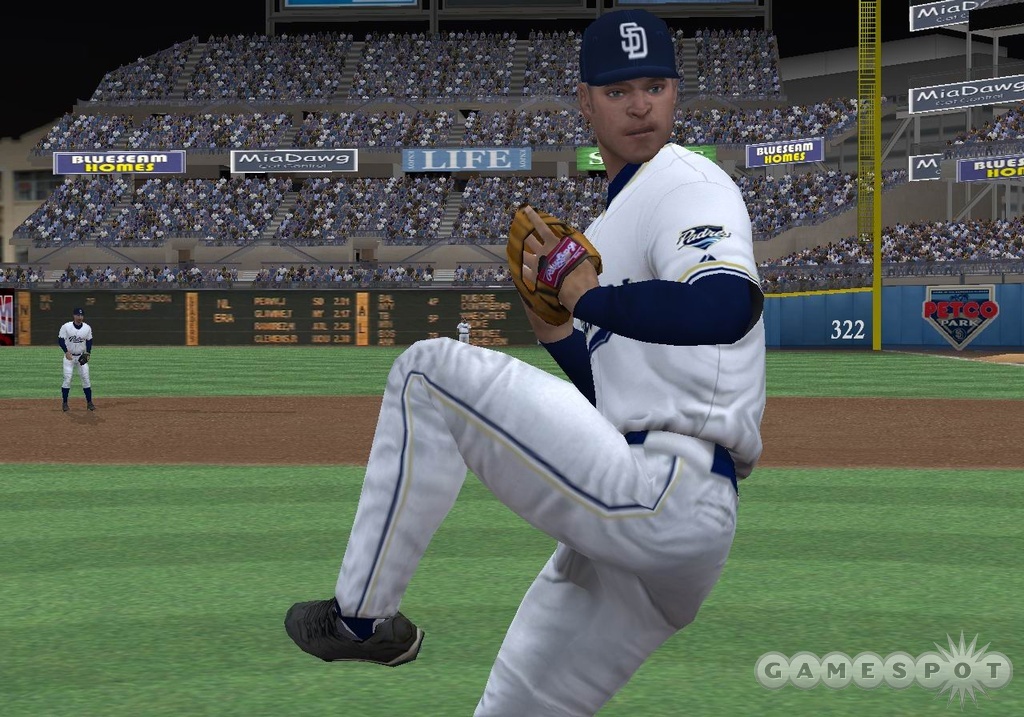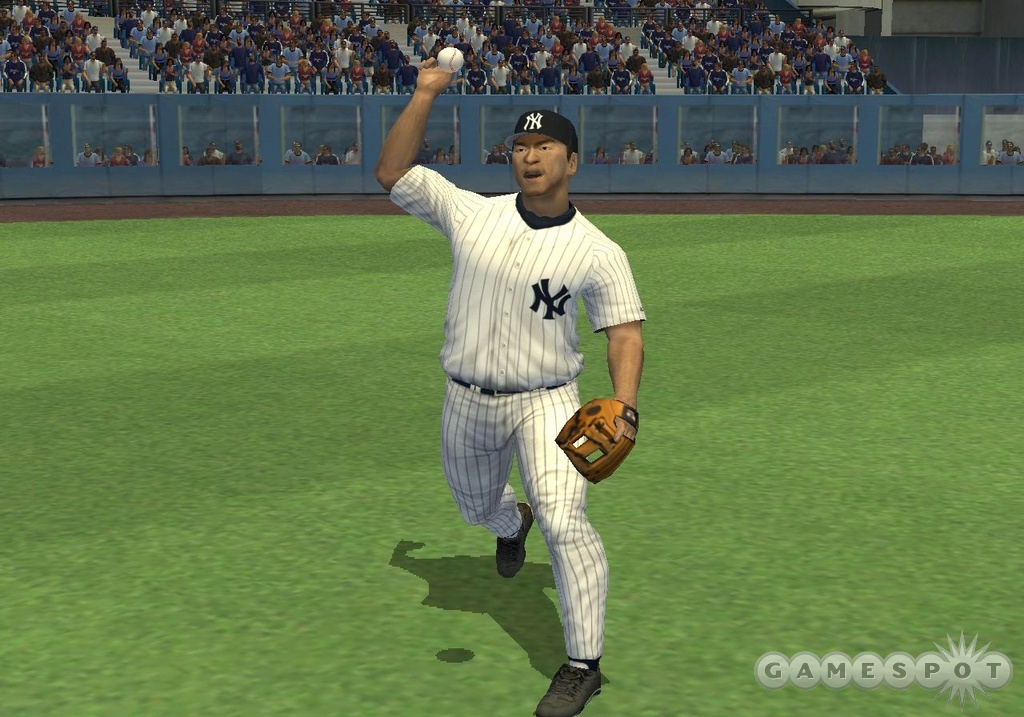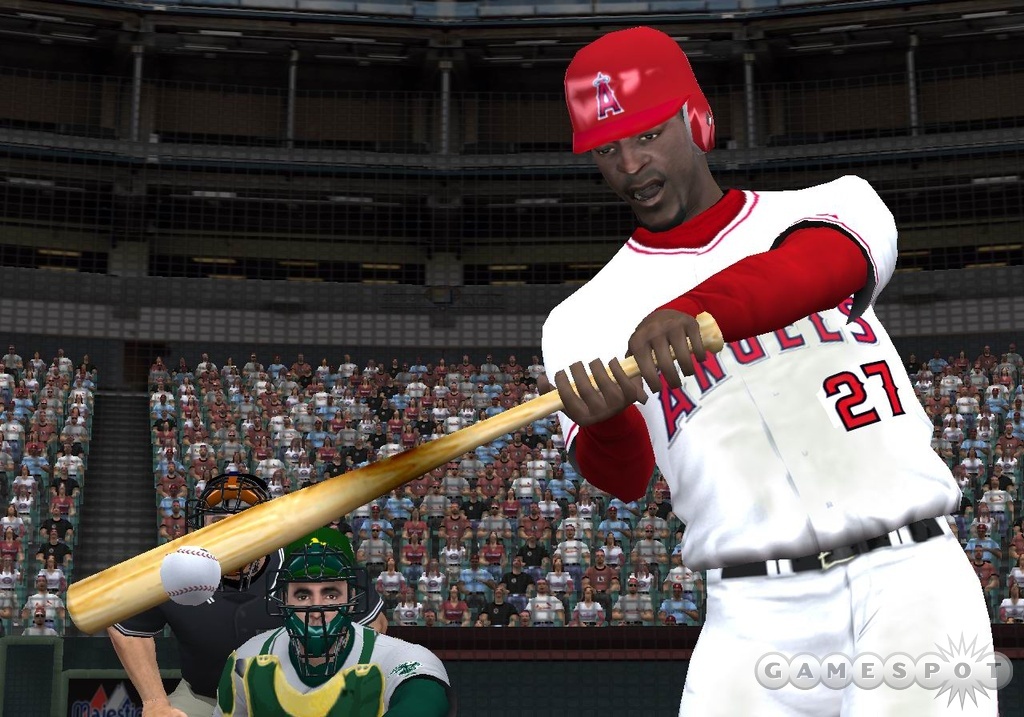MLB 2006 Updated Hands-On
We step up to the plate with the latest version of 989's baseball game.
As the March 1 release date for 989 Sports' MLB 2006 approaches, details are emerging about the crop of features that will be found in the game. We got a chance to try out the latest build of the PS2-exclusive title at a Sony press event today, to see how the game has progressed since our last look in December. Will the game live up to the superb reputation of its newly announced cover athlete, Vladimir Guerrero? So far, things are looking good.

First and foremost on our mind was the game's franchise mode, which has apparently received a fairly substantial makeover. Not only will you be able to take control of the team of your choice and make decisions that will affect their success on the field, but, as the team's owner, you'll now be responsible for the entire organization's financial health. This means that, in addition to signing and scouting new players, you'll be responsible for the more mundane, but no less important, aspects of running a baseball team--setting ticket prices, upgrading your stadium with additional seating, running promotional events to bring fans out to the ballpark, and so on.
To aid you in this endeavor, the interface for the game's franchise mode has received some presentation tweaks to improve the statistical number-crunching aspects of running an MLB team. Take player scouting, for example. In MLB 2006, you'll not only be able to assign your scouts to various regions of the US (or the international baseball community), but you'll also be much more aware of your team needs, thanks to well-organized roster screens that clearly identify team needs with color-coded icons for each position. These screens cover your entire farm system, including triple-A and double-A teams. If your team is thin at third and first base, for example, you can assign your scouts to search only for players at those positions and eschew talent at positions where your team is well stocked.
This detailed scouting information affects how trades are handled in the game as well. If you make it known that you are actively searching for talent at first and third base, other teams will often offer intelligent trades based on both your needs and theirs. Of course, team trading tendencies are affected by a number of other circumstances, including the strategic needs of each team. A team looking to sneak into the playoffs and make a pennant run, for example, might be willing to trade some of their younger talent in exchange for a big-name free agent who can push them over the top, while a team suffering through a horrible year (such as the 2004 Arizona Diamondbacks) will be rebuilding from the bottom up, seeking young talent in their effort to start from scratch. These types of team strategies will play into the kinds of trades offered by computer-controlled clubs.

On the field, some of the most noticeable changes in MLB 2006 can be found in the pitching and fielding mechanics. A new pitching mechanic, dubbed "release-point pitching," makes its debut this year and places more importance on accurate timing when on the mound. Each pitcher will have a sweet spot at the center of the pitching meter that, if nailed perfectly, will result in a successful pitch. Release the throw too early, and your pitch will float into the strike zone; too late, and your throw may land in the dirt. While this new mechanic is easy to pick up, it's important to note that, as your pitcher tires or as pressure mounts in a game, the sweet spot may shrink or even disappear altogether, making pitching understandably more difficult. We felt that pitchers were perhaps a bit too susceptible to pressure early in the game, but we'll see how this feature pans out in the final release.
Making Your Way in the Bigs
After our previous hands-on time with MLB 2006, we discussed the game's new fielding mechanic, which features an on-field icon that displays where a fly ball will land in the outfield. The size and accuracy of that zone is directly tied to the fielding ability of the outfielder closest to the ball. As you move that player toward the spot on the field, the icon will continue to shrink, until it eventually marks the exact place where the ball will land. Place your fielder under the ball and he'll usually make the catch. This new mechanic adds a degree of skill in fielding fly balls and nicely ties together player rating with the gamer's ability to control the player on the move.

The game's three difficulty levels are most obvious in the game's batting controls. While hitting on the most basic difficulty level requires only proper timing, at more advanced levels, you'll be responsible for guessing the location of a pitch before it crosses the plate. At the medium difficulty level, you'll have four zones to choose from when guessing a pitch's location, while on all-star difficulty, the batting box is broken up into nine zones, making hitting that much more challenging.
If it's every boy's dream to one day make it in the majors, MLB 2006 will try to make those dreams a reality--at least in the virtual world--with the game's career mode. You'll start by creating a player and assigning him a position (and a secondary position--a new feature in MLB 2006), and then undertake the difficult task of making it onto a major league team. Like most rookies do, you'll start out in spring training, trying to find a spot on the major league roster. Even if you're not quite big-league material yet, you'll likely find a roster spot on a double-A or triple-A team. From there, it will be up to you to improve your skills, make a name for yourself, and be ready when the manager inevitably calls you up for your shot at the Big Show.
Graphically, the game is looking fine so far--especially the fielding animations, of which there are hundreds. MLB 2006's controls allow you to direct a throw even before the player with the ball is ready. These "called" throws result in fluid animation chains that are essential to pulling off double and triple plays. Fail to call the direction of a throw beforehand and you may miss that crucial throw to first or second base.

While Vin Scully no longer handles play-by-play duties for the MLB series, Brewers announcer Matt Vasgersian and ESPN baseball personality Dave Campbell are still around to handle play-calling duties. The game's developers assured us that both the announcer and the crowd audio selections are more dynamic this time around and will change to accurately reflect the action the field.
Last year's Sony baseball title, MLB 2005, was a nice surprise for baseball fans who had previously been underwhelmed by 989 Sports' baseball line. We're hoping to see this trend continue with MLB 2006, and, judging from what we've seen so far, the title seems to be on the right track. We'll have a full review of the game when it's released in early March.
Got a news tip or want to contact us directly? Email news@gamespot.com
Join the conversation